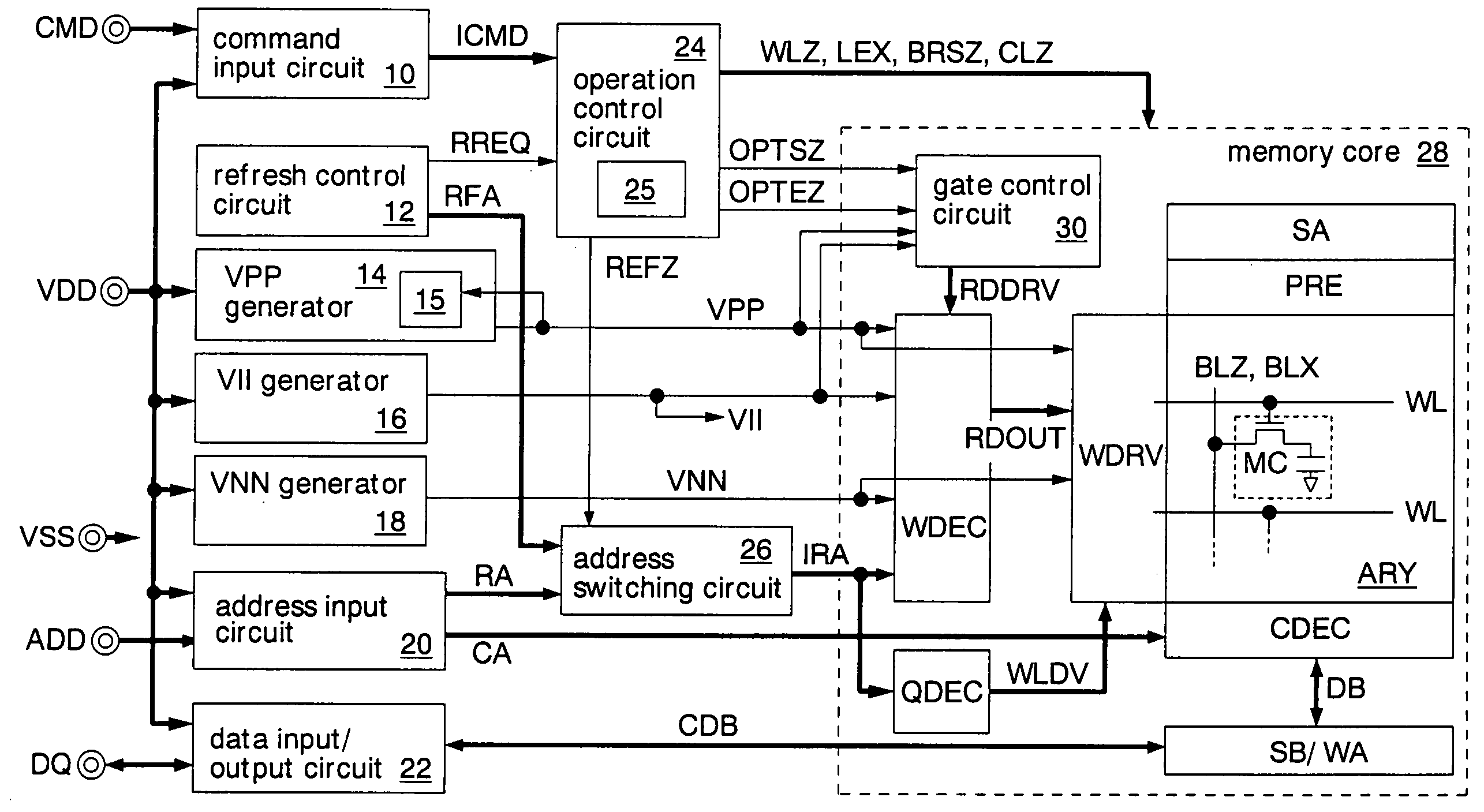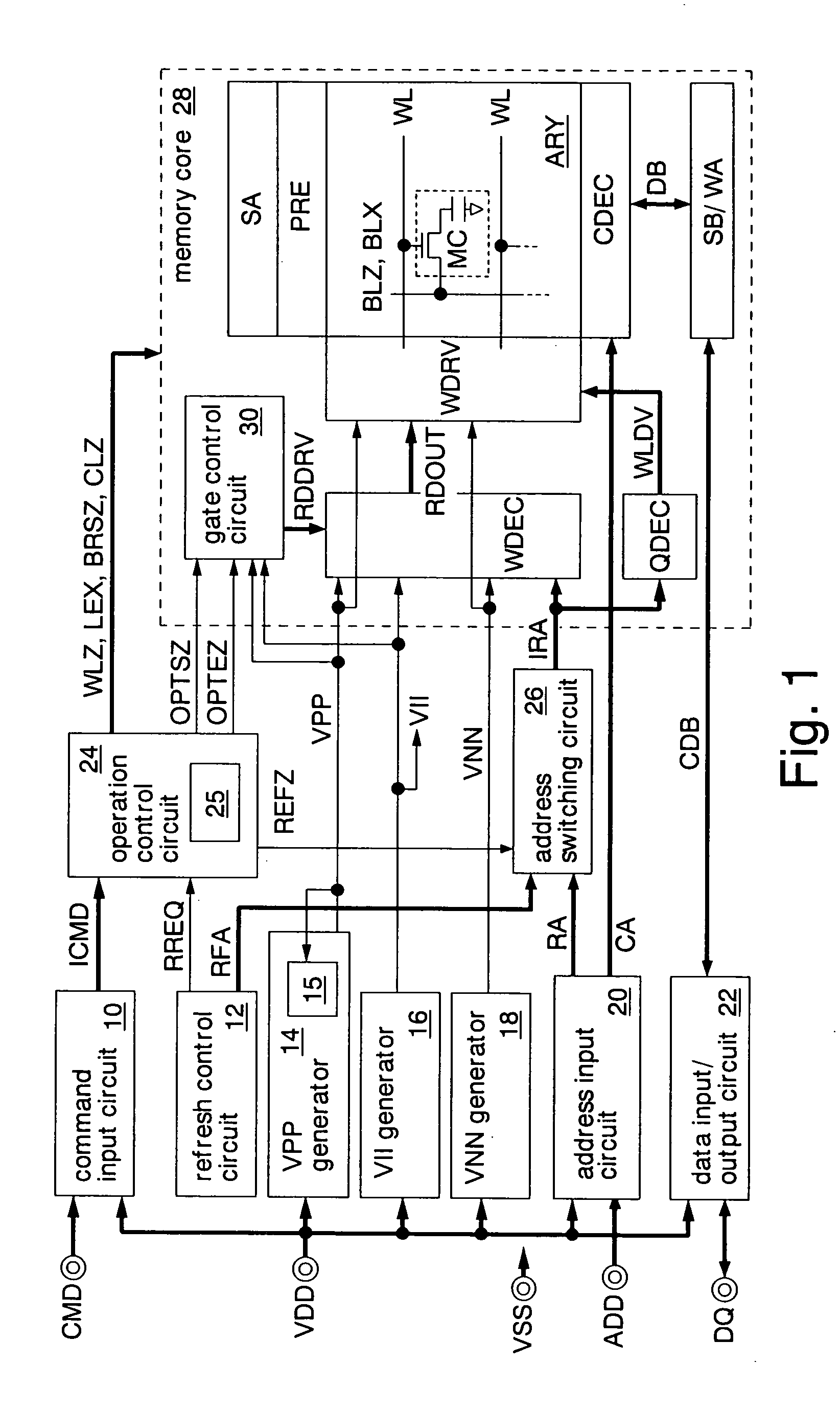Semiconductor memory
a technology of semiconductors and memory, applied in the field of semiconductor memory, can solve the problems of gate induced drain leakage (gidl) current, increase in standby current, serious problems, etc., and achieve the effect of reducing gate induced drain leakage curren
- Summary
- Abstract
- Description
- Claims
- Application Information
AI Technical Summary
Benefits of technology
Problems solved by technology
Method used
Image
Examples
first embodiment
[0046]FIG. 1 shows the semiconductor memory of the present invention. This semiconductor memory is formed as a pseudo SRAM chip on a silicon substrate by using CMOS processes. The pseudo SRAM has a DRAM memory core and an SRAM interface. The pseudo SRAM performs periodic refresh operations inside the chip without receiving refresh commands from exterior, thereby retaining data written in its memory cells. The pseudo SRAM is used, for example, as a work memory to be mounted on a cellular phone. A read operation and a write operation are performed in accordance with command signals CMD (a read command and a write command) supplied through an external terminal.
[0047] The pseudo SRAM has a command input circuit 10, a refresh control circuit 12, a VPP generator 14, a VII generator 16, a VNN generator 18, an address input circuit 20, a data input / output circuit 22, an operation control circuit 24, an address switching circuit 26, and a memory core 28. Incidentally, FIG. 1 only shows essen...
second embodiment
[0114] The foregoing second embodiment has dealt with the case where the present invention is applied to a DRAM having an auto refresh function. However, the present invention is not limited to such an embodiment. For example, the present invention may be applied to a DRAM which receives a refresh command along with a refresh address.
PUM
 Login to View More
Login to View More Abstract
Description
Claims
Application Information
 Login to View More
Login to View More - R&D
- Intellectual Property
- Life Sciences
- Materials
- Tech Scout
- Unparalleled Data Quality
- Higher Quality Content
- 60% Fewer Hallucinations
Browse by: Latest US Patents, China's latest patents, Technical Efficacy Thesaurus, Application Domain, Technology Topic, Popular Technical Reports.
© 2025 PatSnap. All rights reserved.Legal|Privacy policy|Modern Slavery Act Transparency Statement|Sitemap|About US| Contact US: help@patsnap.com



